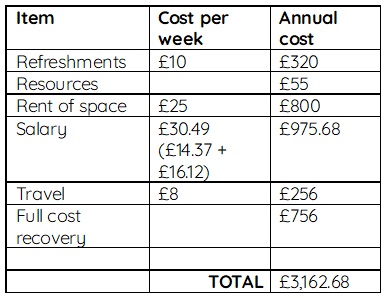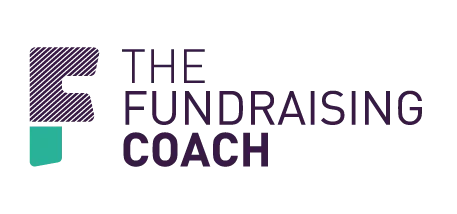
Blogs
These are a mixture of blogs (and vlogs) written by myself and guest writers with specialist knowledge in different areas of fundraising. These are designed to help you with your fundraising. Get in touch to suggest or request a topic.

Maximising Grant Funding: Understanding Full Cost Recovery
Maximising Grant Funding: Understanding Full Cost Recovery
Lots of non-profits rely on funding from Grant-Givers to deliver on their work. But most Grant-Givers fund project costs and finding core costs is harder! However, the process of calculating full cost recovery, often overlooked, is essential for ensuring sustainability and effectiveness in the long run. In this blog, we'll break down what full cost recovery means, why it's important, how to add it project costs and how to calculate it laid out simply.
What is Full Cost Recovery?
Full cost recovery refers to the practice of ensuring that all costs associated with delivering a project or service are covered by the funding received. These costs include both direct costs (those directly attributable to the project) and indirect costs (overheads such as rent, utilities, and administrative expenses).
So you may deliver a lunch club once a week so the direct costs are the food, drinks, paper, resources, salary of those delivering it and travel costs. But in reality, you couldn’t deliver the club without an office to plan the club, a laptop to write session plan, Wi-Fi to access online resources, public liability insurance, employers liability insurance etc… And you also might need time of a line manager to manage the staff and a annual training budget to invest in the staff. So yes, you deliver one lunch club but there are so many extra costs to your organisation in the background that you need so you can run the cost. These are your indirect costs.
Why is Full Cost Recovery Important?
Many grant givers tend to fund only specific aspects of projects, such as direct program costs, leaving organisations to cover indirect costs themselves. However, neglecting to account for these indirect costs can lead to financial strain, compromising the sustainability of the project or organisation in the long term. If you include them in your project budget, it shows the grant giver how much the project really costs. Although they may not fund this budget cost, it shows them that you understand your finances and can be trusted as you have a grasp on all the finer financial details. You can also show that you’ll work in partnership with them so if they fund the direct costs, you will fund (or fund someone else to fund) the indirect costs. Full Cost Recovery shows competence, need and larger picture.
Calculating Full Cost Recovery:
1. Identify Direct Costs:
Begin by identifying all direct costs associated with your project. These are expenses that can be clearly attributed to the project activities, such as staff salaries directly involved in project delivery, materials, and travel expenses.
2. Determine Indirect Costs:
Next, calculate your indirect costs. These are expenses that support the overall functioning of your organisation but are not directly tied to specific projects. They include items like rent, utilities, insurance, and administrative staff salaries.
3. Allocate Indirect Costs:
Allocate your indirect costs to each project based on a reasonable methodology. This could be done proportionally based on the project's share of total staff time, budget, or other relevant factors. E.g. if the project takes 3 hours to deliver and plan each week, you assign 3/37.5’s worth of indirect costs to the project. Make sure things like insurance are shared among all the employees and outputs.
4. Calculate Full Cost:
Once you've determined both direct and indirect costs, add them together to get the full cost of your project. This represents the total amount needed to deliver the project successfully while covering all associated expenses. However, when presenting your budget, you must break it down and include the heading of full cost recovery so grant givers know exactly what they are being asked to fund.
Let’s run through an example

Say you run a lunch club each week during term time (32 weeks a year). The direct project costs are the refreshments, resources, rent of the space, salary and travel. Some grant givers won’t fund salary as part of the project but would still fund the refreshments, resources and potentially the rent. I’ve used this table to help me work out the weekly cost and then how much that is each year. If a grant giver only funds capital costs for the project (refreshments and resources), you’ll ask for £375. If they fund all project costs (with rent of space, salary and travel), you’ll ask for £2,406.68. If they fund everything, ask for the full £3,162.68. This hopefully helps you to see that although expenses might seem low to deliver the club, it actually costs your non-profit far more and that should be included in the budget.
In summary, full cost recovery is crucial for the financial sustainability of grant-funded projects. By accurately calculating and including all direct and indirect costs, non-profits can ensure that they have the necessary resources to deliver their projects effectively without incurring financial strain. Understanding and implementing full cost recovery not only strengthens individual projects but also contributes to the overall resilience and impact of the organisations that undertake them.









